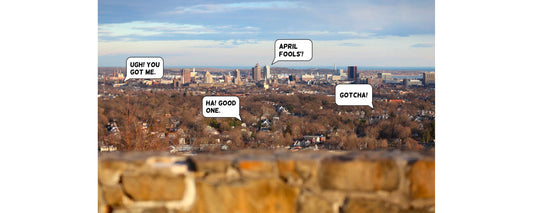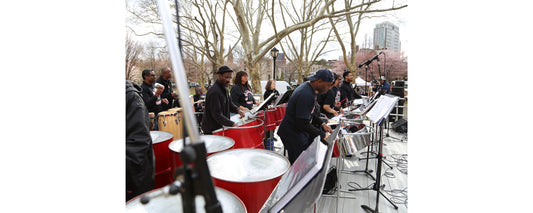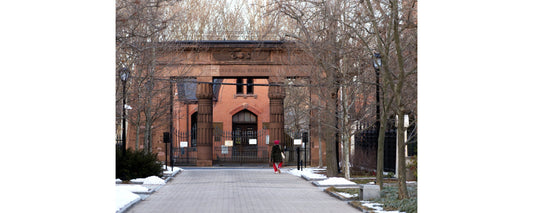You don’t have to pierce your own nipples and suspend your self from hooks until you reach a moment of ecstasy in order to get published in our zine…..but if your interested in doing that please contact us.
PANTS DESTROYER.
a zine with no filter and even less theme.
—Facebook update, February 17, 2016
* * *
Behind a bright yellow door next to the Bubble and Squeak laundromat, along a stretch of Park Street not two blocks from the city’s main drag, a socioaesthetic revolt is stirring. Fomented by married artists/curators Laura Marsh and Phil Lique, and inspired by the No Wave movement of the late 1970s, it’s a visual-arts reaction against the institutional art world’s rulebook; a liberation for both artists and audiences; and the producer of what sounds like it’ll be a deeply entertaining new ’zine.
It’s No Pop, and it wants you, and what it wants you for is uncommonly open-ended. No Pop is what Lique calls a “process space”—part studio and part gallery, plunged into an intentional, persistent state of change, as is much of the art inside. This is even truer when No Pop and its contents are open to the public, which happens during one-night shows that are more like house parties than wine-and-cheesers. Not only is the space in a state of greater flux at such times but so is the work, with Marsh and Lique treating visitors as participants, not just viewers.
sponsored by
Take Marsh’s Lady Cave: Femme Irresistible. It’s an ever-evolving installation nestled into one corner of No Pop’s main room, and it’s a visual racket. About four feet long, five feet wide and seven or eight feet tall, a set of plastic strips—like a colorful, thin-stripped version of the mysterious portal that ejects your suitcase at the airport baggage terminal—covers the door. Fabrics printed with patterns from polka dots to animal prints to basketball-like pumpkins (or maybe pumpkin-like basketballs?) are spliced together to form the cave’s structural surfaces: walls, ceiling and floor, plus padded, pillow-lined benches edging three sides. And because most of us have learned to keep our hands off of the art we examine, it merits saying that Lady Cave’s walls are meant for (gentle) touching, its floor meant for standing, its benches meant for sitting. The pillows are meant to be moved for comfort, or on a whim, and so are felt roses with stems that can be stuck into this crevice or that.
That’s just the beginning of the tiny tent’s oddities. Varied satellites—like lit-up plastic flowers, a geodesic disco ball and chutes of additional funky fabrics—hang beneath neuronal lights and synaptic wires spreading like ivy down the walls. Controlled by hidden switches, the lights are capable of different colors and speeds—hot pinks, ice blues, emerald greens, all waxing and waning at paces from manic to lolling. Masks made by Marsh and hung on the walls are meant to be used, meaning they’re always getting moved around. Other elements are more static, though not necessarily immune to flux—inflatables stuck to the wall sometimes deflate and have to be blown back up. Sometimes Burt, No Pop’s resident (and super-friendly) pit bull, uses the cave’s heavy-shag carpet to take a nap. When I was there, he claimed a donut-shaped balloon with a toothy lipsticked mouth strapped to it—one of the installation’s many other strange objects—for a pillow.
Point is, Lady Cave is an art installation, yes, but it’s also accessible, meant to be inhabited by any who wander over and can find a spot to sit. It’s also meant to make you think while you’re in it. Marsh’s initial inspiration for the work was a peculiar textile she found in Italy, now part of the cave’s front wall. Covered in large comic strips with a mishmash of languages inside its speech bubbles, the strips are a series of soap opera-style vignettes with “this narrative of men chasing women, and women understanding their sexual prowess, and being excited and scared about that, and wanting to hide and run away and seek security,” Marsh says, laughing.
She wants the space to spur examination of such traditional gender roles, using the power of a novel experience to break through stale or limiting attitudes. “I hope that there’s this magical feeling of discovering,” she says. “I want people to come in here and wear masks and take selfies,” and to “talk about gender roles, and dressing up, and reversals.” Masks, after all, are a very literal way of altering your identity, and also your perspective. “But mainly I want people to laugh about the silliness of it all. To feel somewhat silly, to take a photograph, to sit down and feel like you can have a conversation.”
With all the strange objects, textures, colors and sensations that are packed into the tiny space, and with more on the way, conversations seem inevitable. Marsh is happy to take part in them, too. “I’ve been bringing people in” to the cave to get critiques, she says, and to have mini-events, including a gender-related movie screening despite the close quarters. She also hopes to make a film spoofing some of those comic-strip storylines.
There’s a lot going on in Lady Cave, and the same goes for No Pop more generally. There’s plenty more work from Marsh, Lique and many other local artists displayed here and there. Tucked into “The Egg,” a narrow room that’s one of the defined subspaces at No Pop, is John O’Donnell’s installation Pizza Temple, a faux-stone shrine with a color-drifting light source shooting skyward out of a column of pizza boxes. Speaking of boxes, No Pop’s displays even extend outside, where a lightbox currently features Linda Lindroth’s vision Vision.
I should mention that the preceding account of the place is accurate as of last Friday, when I experienced it. No Pop, remember, is a process space, where “interaction” and “dialogue” and “interrogation”—terms relegated to metaphor at most galleries—are often quite literal, and where you can experience something once and never find it in that state again. Who knows how No Pop’s shapes will shift before its next party, “Cave In,” happening Saturday, February 27?
No one, that’s who. And that’s a big part of the appeal.
No Pop
130 Park St, New Haven (map)
(203) 824-6078
Website | Facebook | “Cave In”
Written and photographed by Dan Mims.








